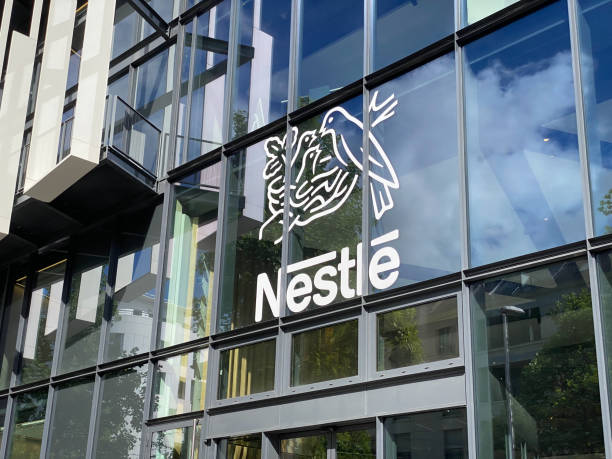
Nestlé Nigeria Plc just pulled off a stunning 9‑month turnaround in 2025: a ₦72.5 billion profit after tax up from a ₦184.3 billion loss last year on a 33 % revenue surge to ₦884.5 billion. Behind the numbers are tighter cost controls, slashed finance costs, and a faster cash‑conversion cycle. Yet the climb came with hurdles: thin liquidity, high leverage, and a still‑negative equity base. Let’s break down the key ratios in plain language for investors, lenders, employees, and regulators.
Nestlé Nigeria’s profitability has swung dramatically in the first nine months of 2025, reflecting a sharp recovery from the deep losses of the previous year. A 13.9‑percentage‑point jump in gross margin to 40.6 % shows the company’s success in passing on higher raw‑material costs and tightening cost‑of‑sales controls, which fed straight into a net margin of 8.2 % up from a negative 27.7 % in 2024. Operating margin more than doubled to 25.1 %, underscoring disciplined expense management and economies of scale that kept operating profit at ₦181.3 billion.
However, the return metrics tell a more nuanced story. Return on Equity (ROE) slipped to 4.96 % from 6.25 %, largely because equity grew slower than profit and remains negative, inflating the ratio. Return on Assets (ROA) stayed flat at 0.47 %, indicating that the ₦850 billion asset base expanded faster than earnings, pointing to lingering efficiency gaps. In short, while Nestlé Nigeria has restored earnings power, strengthening its capital base especially equity will be key to boosting ROE and ROA.
Nestlé Nigeria’s short‑term solvency picture remains tight, though it is showing clear signs of improvement. The current ratio edged down to 0.87 × from 0.89 ×, meaning the company now holds only ₦0.87 of current assets for every ₦1 of current liabilities a liquidity squeeze that flags near‑term pressure. This strain is even more evident in the quick ratio, which slipped to 0.36 × (down from 0.40 ×), indicating that just 36 kobo of cash and receivables is available to cover each naira of short‑term debt, forcing a heavy reliance on inventory to meet obligations.
On the brighter side, management has made a solid efficiency gain in working‑capital management. The cash conversion cycle (CCC) shortened by 29 days to 92 days, driven by faster inventory turnover (121 days versus 135 days) and a longer payment window to suppliers (55 days versus 36 days), even as receivables collection slowed slightly (26 days versus 22 days). This tighter CCC translates into a healthier cash flow, helping to offset the thin current and quick ratios and positioning the company to better navigate its short‑term financing needs.
Nestlé Nigeria’s leverage profile remains a double‑edged sword. The debt‑to‑equity ratio widened to –27.6 × from –10.2 ×, a reflection of the company’s still‑negative equity base, which inflates the ratio and signals high financial leverage and a lingering solvency concern. On the brighter side, the net debt‑to‑EBITDA ratio eased slightly to 2.85 ×, down from 3.12 ×, indicating that earnings before interest, tax, depreciation, and amortization now cover net debt more comfortably than before. This modest improvement is backed by the fact that operating cash generation has strengthened, narrowing the gap between debt and earnings.
The most encouraging shift comes in debt‑service ability. Interest coverage surged to 3.3 ×, a dramatic climb from just 0.3 × in the prior year, meaning EBIT now comfortably shoulders finance costs. This turnaround is largely the result of a strategic early repayment of a USD 20 million inter‑group loan, which cut forex exposure and slashed interest expense. While the high leverage remains a red flag especially with negative equity management’s decisive debt‑pay-down and stronger earnings have created a more manageable risk profile and a clearer path to long‑term solvency.
Nestlé Nigeria’s efficiency ratios reveal a tighter grip on asset utilisation. The asset turnover climbed to 0.57 × from 0.45 ×, showing that each naira of total assets now generates more revenue a clear sign that the company is extracting greater output from its existing base. This improvement is reinforced by the fixed‑asset turnover, which rose to 1.91 × compared with 1.58 × in FY 2024, indicating that the plant and equipment are being worked harder to drive sales. Together, these gains point to operational discipline that should support margin expansion as revenue growth outpaces asset growth.
Despite the operational uplift, market sentiment remains cautious. The P/E ratio slipped to 4.56 × from 5.63 ×, reflecting investor concerns that earnings momentum may stall or that the risk premium remains elevated. Simultaneously, the P/B ratio fell to 0.32 ×, well below the 0.52 × recorded a year earlier, underscoring the market’s wariness of the company’s negative equity and high leverage. In short, while Nestlé Nigeria is squeezing more value from its assets, valuation multiples suggest investors are still pricing in the lingering liquidity and leverage challenges.
Nestlé Nigeria’s 2025 performance paints a picture of turnaround triumph balanced by lingering vulnerabilities: robust revenue growth of 33 % and a swing to a ₦72.5 billion profit after tax have lifted margins (gross margin up 13.9 pp, net margin turning positive 8.2 %), while a tighter cash‑conversion cycle (92 days vs 121 days) and lower finance costs signal operational discipline. Yet the company still grapples with thin liquidity current ratio 0.87 × and quick ratio 0.36 × plus high leverage driven by negative equity, inflating the debt‑to‑equity ratio to –27.6 ×.
Investors should applaud the early USD 20 million debt repayment and improved interest coverage of 3.3 ×, but keep an eye on cash‑flow stability and equity rebuilding. Lenders benefit from better coverage yet must watch covenant compliance given the elevated leverage. Employees and regulators can expect steadier jobs and higher tax contributions as profitability rises, though governance around debt management remains critical. In short, Nestlé Nigeria has turned turbulence into a foundation for sustainable growth, provided it shores up its equity base and maintains disciplined cash management.




